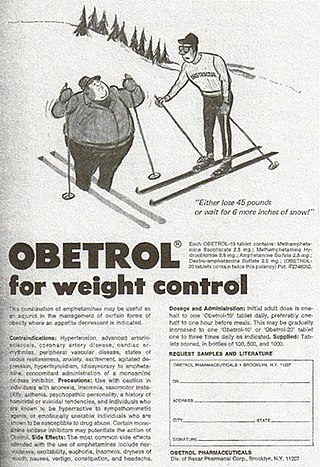This is an alphabetical list of psychiatric medications used by psychiatrists and other physicians to treat mental illness or distress.
Acamprosate, Alprazolam, Amisulpride, Amitriptyline, Amoxapine, Amphetamine, Mixed Amphetamine Salts, Aripiprazole, Atomoxetine
Calcium carbimide, Carbamazepine, Chloralhydrate, Chlordiazepoxide, Clorgiline, Chlorpromazine, Citalopram, Clomipramine, Clonazepam, Clonidine,Clorazepate, Clozapine
Desvenlafaxine, Dextroamphetamine, Diazepam, Disulfiram, Duloxetine
Lamotrigine, Lemborexant, Levoamphetamine, Levomepromazine, Lisdexamfetamine, Lithium, Lorazepam, Loxapine, Lumateperone, Lurasidone
Maprotiline, Melperone, Meprobamate, Mesoridazine, Methamphetamine, Methaqualone, Methylphenidate, Mianserin, Mirtazapine, Mixed Amphetamine Salts, Moclobemide, Modafinil
Paliperidone, Pargyline, Paroxetine, Perphenazine, Phenelzine, Phenytoin, Pipamperone, Pimavanserin, Pimozide, Pipotiazine, Pramipexole, Pregabalin, Primidone, Prochlorperazine, Promethazine, Prothipendyl, Protriptyline
Scopolamine, Selegiline, Sertraline, Sodium Thiopental, Sulfonmethane, Sulpiride
Temazepam, Thioridazine, Thiothixene, Topiramate, Tranylcypromine, Trazodone, Triazolam, Trifluoperazine, Trimipramine
Zaleplon, Zimelidine, Ziprasidone, Zolpidem, Zopiclone, Zotepine, Zuclopenthixol

Amphetamine is a central nervous system (CNS) stimulant that is used in the treatment of attention deficit hyperactivity disorder (ADHD), narcolepsy, and obesity. Amphetamine was discovered as a chemical in 1887 by Lazăr Edeleanu, and then as a drug in the late 1920s. It exists as two enantiomers: levoamphetamine and dextroamphetamine. Amphetamine properly refers to a specific chemical, the racemic free base, which is equal parts of the two enantiomers in their pure amine forms. The term is frequently used informally to refer to any combination of the enantiomers, or to either of them alone. Historically, it has been used to treat nasal congestion and depression. Amphetamine is also used as an athletic performance enhancer and cognitive enhancer, and recreationally as an aphrodisiac and euphoriant. It is a prescription drug in many countries, and unauthorized possession and distribution of amphetamine are often tightly controlled due to the significant health risks associated with recreational use.

The term narcotic originally referred medically to any psychoactive compound with numbing or paralyzing properties. In the United States, it has since become associated with opiates and opioids, commonly morphine and heroin, as well as derivatives of many of the compounds found within raw opium latex. The primary three are morphine, codeine, and thebaine.

A psychiatric or psychotropic medication is a psychoactive drug taken to exert an effect on the chemical makeup of the brain and nervous system. Thus, these medications are used to treat mental illnesses. These medications are typically made of synthetic chemical compounds and are usually prescribed in psychiatric settings, potentially involuntarily during commitment. Since the mid-20th century, such medications have been leading treatments for a broad range of mental disorders and have decreased the need for long-term hospitalization, thereby lowering the cost of mental health care. The recidivism or rehospitalization of the mentally ill is at a high rate in many countries, and the reasons for the relapses are under research.

Stimulants is an overarching term that covers many drugs including those that increase the activity of the central nervous system and the body, drugs that are pleasurable and invigorating, or drugs that have sympathomimetic effects. Stimulants are widely used throughout the world as prescription medicines as well as without a prescription as performance-enhancing or recreational drugs. Among narcotics, stimulants produce a noticeable crash or comedown at the end of their effects. The most frequently prescribed stimulants as of 2013 were lisdexamfetamine (Vyvanse), methylphenidate (Ritalin), and amphetamine (Adderall). It was estimated in 2015 that the percentage of the world population that had used cocaine during a year was 0.4%. For the category "amphetamines and prescription stimulants" the value was 0.7%, and for MDMA 0.4%.

Dextroamphetamine is a potent central nervous system (CNS) stimulant and enantiomer of amphetamine that is prescribed for the treatment of attention deficit hyperactivity disorder (ADHD) and narcolepsy. It is also used as an athletic performance and cognitive enhancer, and recreationally as an aphrodisiac and euphoriant.
Stimulant psychosis is a mental disorder characterized by psychotic symptoms. It involves and typically occurs following an overdose or several day 'binge' on psychostimulants; however, one study reported occurrences at regularly prescribed doses in approximately 0.1% of individuals within the first several weeks after starting amphetamine or methylphenidate therapy. Methamphetamine psychosis, or long-term effects of stimulant use in the brain, depend upon genetics and may persist for some time.

Adderall and Mydayis are trade names for a combination drug called mixed amphetamine salts containing four salts of amphetamine. The mixture is composed of equal parts racemic amphetamine and dextroamphetamine, which produces a (3:1) ratio between dextroamphetamine and levoamphetamine, the two enantiomers of amphetamine. Both enantiomers are stimulants, but differ enough to give Adderall an effects profile distinct from those of racemic amphetamine or dextroamphetamine, which are marketed as Evekeo and Dexedrine/Zenzedi, respectively. Adderall is used in the treatment of attention deficit hyperactivity disorder (ADHD) and narcolepsy. It is also used illicitly as an athletic performance enhancer, cognitive enhancer, appetite suppressant, and recreationally as a euphoriant. It is a central nervous system (CNS) stimulant of the phenethylamine class.
There are many hundreds of thousands of possible drugs. Any chemical substance with biological activity may be considered a drug. This list categorises drugs alphabetically and also by other categorisations.

Benzylpiperazine (BZP) is a recreational drug with euphoriant and stimulant properties. The effects produced by BZP are comparable to those produced by amphetamine. Adverse effects have been reported following its use including acute psychosis, renal toxicity and seizures. Deaths from piperazine derivatives are extremely rare, but there has been at least one death apparently due to BZP alone. Its sale is banned in several countries, including Australia, Canada, New Zealand, the United States, the Republic of Ireland, the United Kingdom, Bulgaria, Romania and other parts of Europe.

Methylone, also known as 3,4-methylenedioxy-N-methylcathinone (MDMC), is an empathogen and stimulant psychoactive drug. It is a member of the amphetamine, cathinone and methylenedioxyphenethylamine classes.

Polysubstance use or poly drug use refers to the use of combined psychoactive substances. Polysubstance use may be used for entheogenic, recreational, or off-label indications, with both legal and illegal substances. In many cases one drug is used as a base or primary drug, with additional drugs to leaven or compensate for the side effects, or tolerance, of the primary drug and make the experience more enjoyable with drug synergy effects, or to supplement for primary drug when supply is low.

Clobenzorex is a stimulant drug of the amphetamine chemical class used as an appetite suppressant. The drug is legally distributed in Mexico under the trade name Asenlix by Aventis.

Obetrol was the brand name of a drug combining several amphetamine salts indicated for the treatment of exogenous obesity. It was originally sold by the American company Obetrol Pharmaceuticals. Obetrol was a popular diet pill in America in the 1950s and 1960s.

Levoamphetamine is a central nervous system (CNS) stimulant known to increase wakefulness and concentration in association with decreased appetite and fatigue. Pharmaceuticals that contain levoamphetamine are currently indicated and prescribed for the treatment of attention deficit hyperactivity disorder (ADHD), obesity, and narcolepsy in some countries.
Desbutal was a brand name drug by Abbott containing 5 mg methamphetamine hydrochloride (Desoxyn) and 30 mg pentobarbital sodium (Nembutal); a substituted amphetamine and a barbiturate combined within the same pill. Desbutal was marketed as an antidepressant as well as a medication for the treatment of obesity, narcolepsy, parkinsonism, and alcoholism, although it was commonly also prescribed off-label for miscellaneous ailments. It had a high abuse potential and is no longer manufactured.
Substituted amphetamines are a class of compounds based upon the amphetamine structure; it includes all derivative compounds which are formed by replacing, or substituting, one or more hydrogen atoms in the amphetamine core structure with substituents. The compounds in this class span a variety of pharmacological subclasses, including stimulants, empathogens, and hallucinogens, among others. Examples of substituted amphetamines are amphetamine (itself), methamphetamine, ephedrine, cathinone, phentermine, mephentermine, tranylcypromine, bupropion, methoxyphenamine, selegiline, amfepramone (diethylpropion), pyrovalerone, MDMA (ecstasy), and DOM (STP).
Bath salts are a group of recreational designer drugs. The name derives from instances in which the drugs were disguised as bath salts. The white powder, granules, or crystals often resemble Epsom salts, but differ chemically. The drugs' packaging often states "not for human consumption" in an attempt to circumvent drug prohibition laws. Additionally, they may be mislabeled as plant food, powdered cleaner, and other such products.
Stimulant use disorder is a type of substance use disorder where the use of stimulants caused clinically significant impairment or distress. It is defined in the DSM-5 as "the continued use of amphetamine-type substances, cocaine, or other stimulants leading to clinically significant impairment or distress, from mild to severe". These psychoactive drugs, known as stimulants, are among the most widely used drugs in the world today, although not all stimulants can induce addiction. As of 1993, Approximately 200 million Americans have used some type of stimulant in the past year alone.